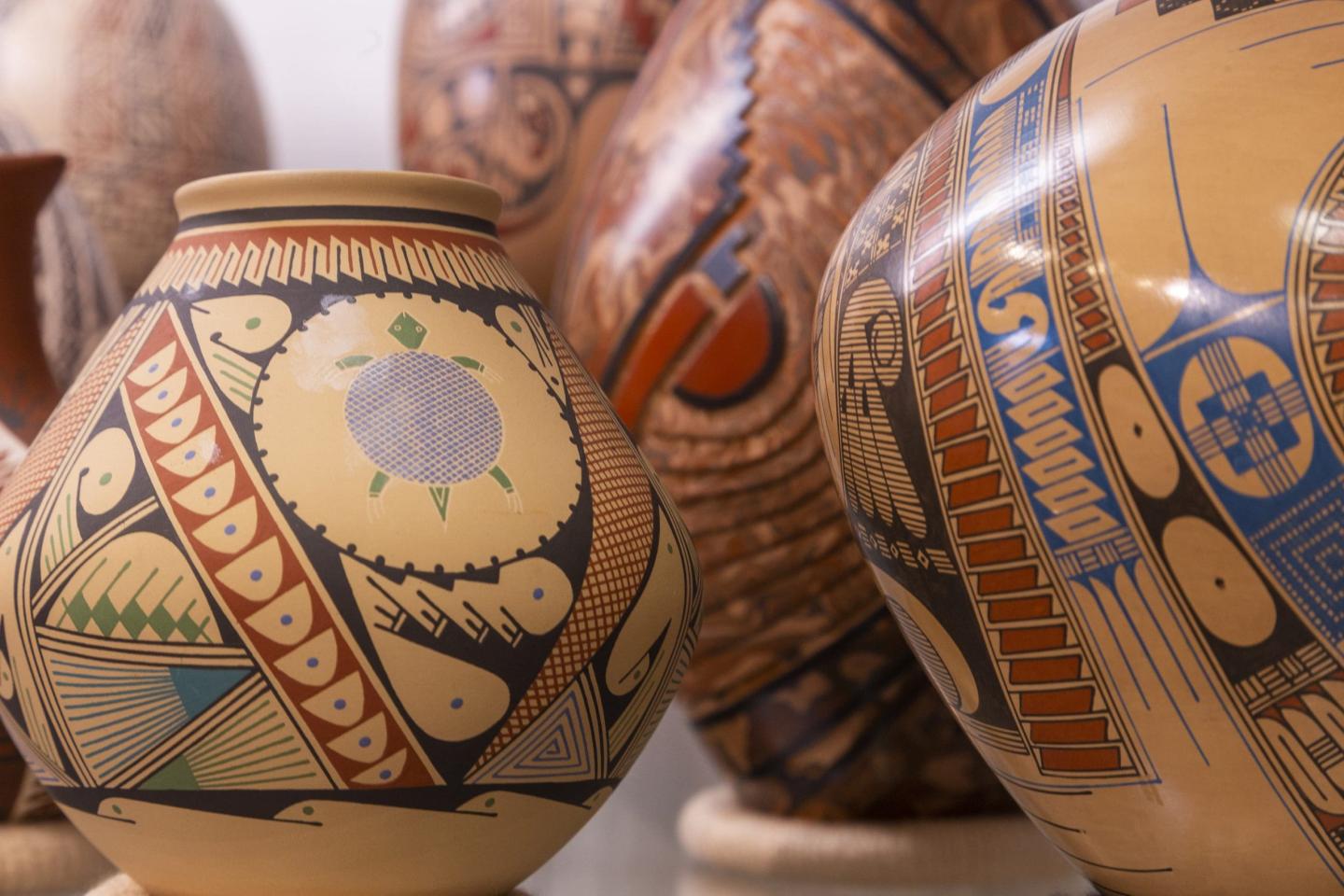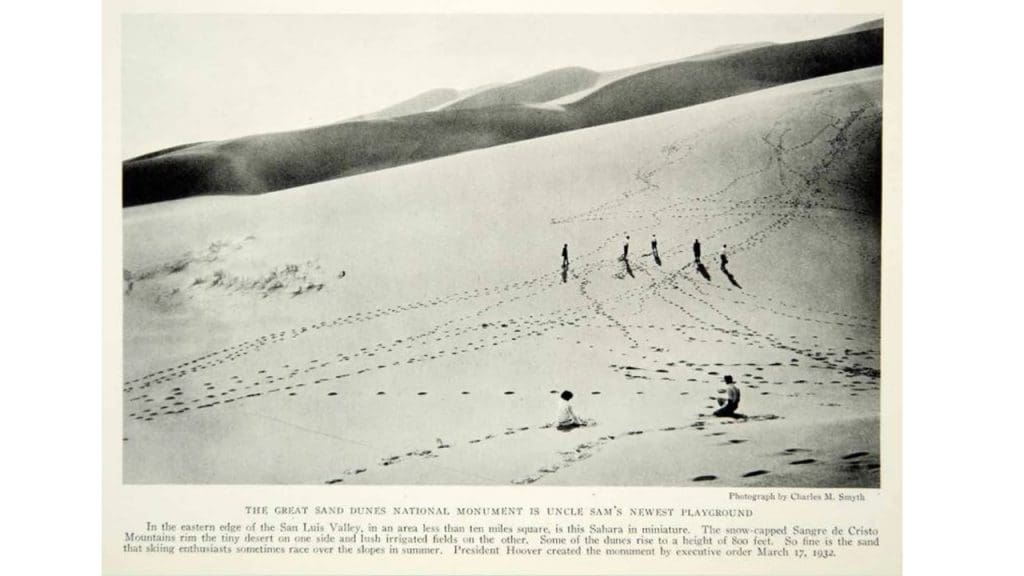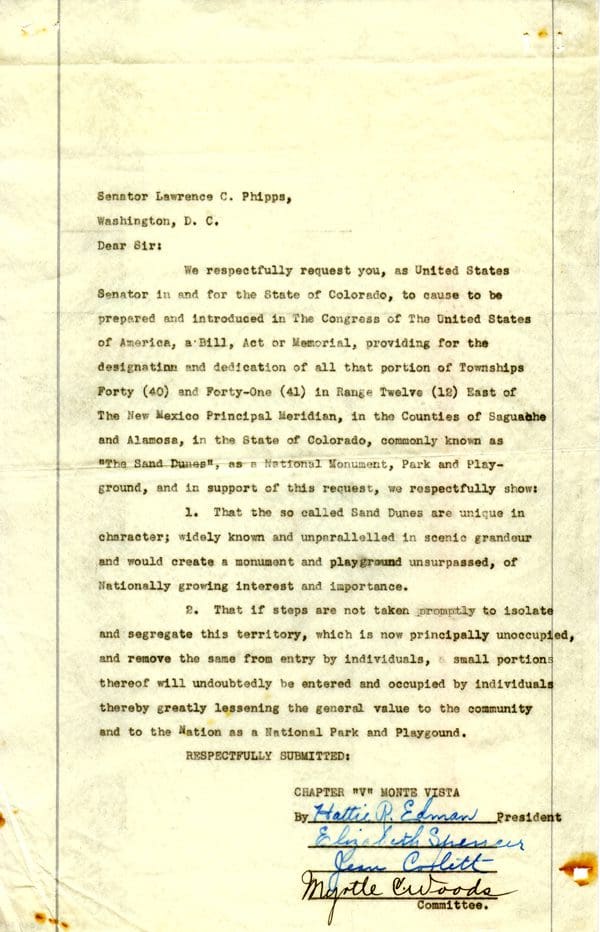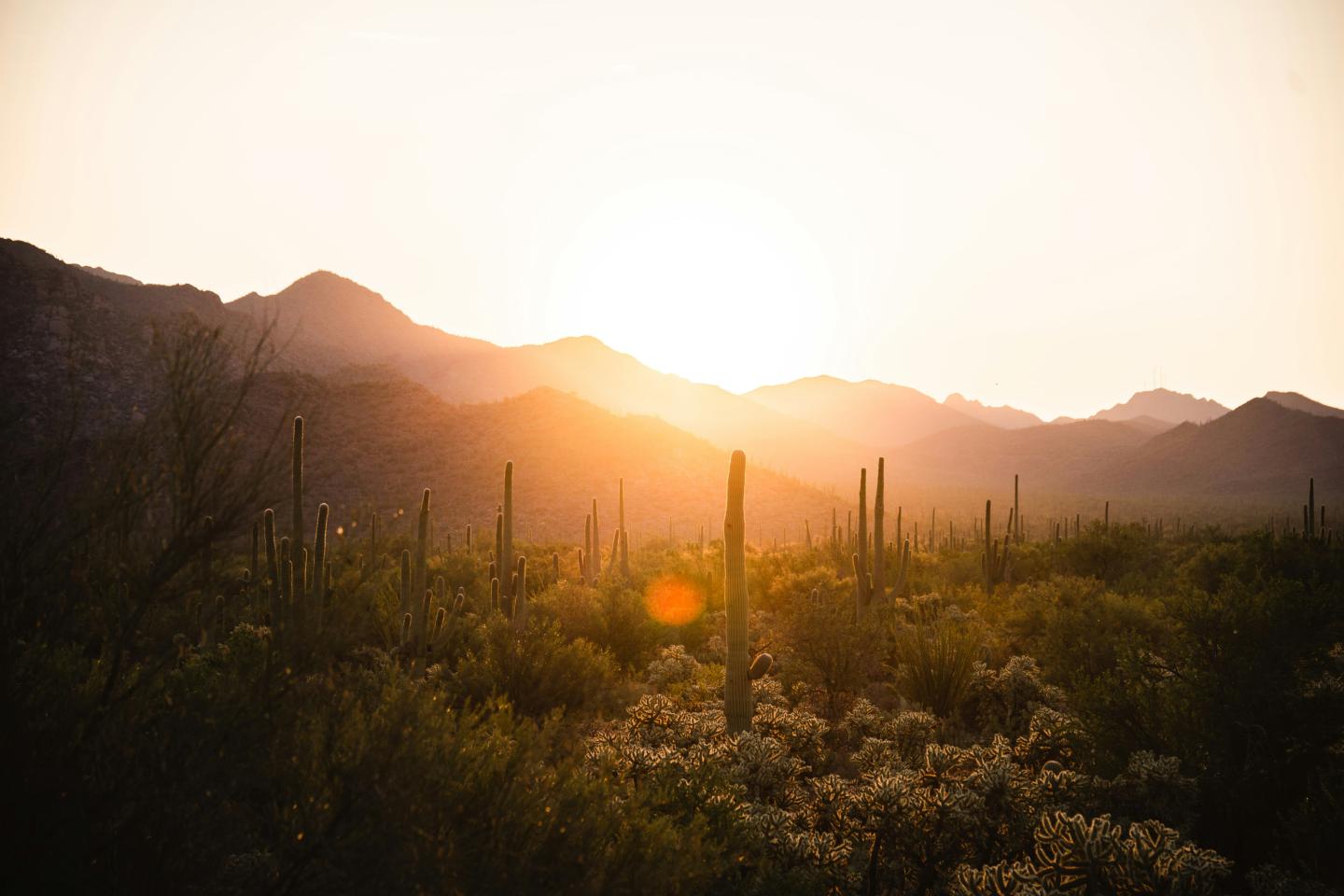
Women and the History of Great Sand Dunes National Park & Preserve

Just as extraordinary as the natural features of the Great Sand Dunes National Park and Preserve, so was the undertaking that forward-thinking, strong-willed women in the San Luis Valley organized in 1930 to finally protect the dunes landscape as a national monument. This Women’s History month, I tip my ranger hat to these Philanthropic Educational Organization (PEO) sisters who seized the opportunity to protect a unique area in their community as a National Monument in the name of conservation. Their aim, more specifically, was to protect the beauty, rich archeology, and the dunes themselves from mining for gold and sand.

The PEO Sisterhood Organization was founded on January 21, 1869, by seven women in Mount Pleasant, Iowa, to celebrate the advancement of women; educate women through scholarships, grants, awards, loans, and stewardship of Cottey College (in Nevada, MO); and motivate women to achieve their highest aspirations. This non-profit organization is one of the oldest women’s organizations in North America, with close to 6,000 chapters.
The idea of establishing this rare and remarkable dune field as a National Monument originated on a summer day in June 1930, during a PEO luncheon presentation by San Luis Valley resident and Monte Vista Chapter V PEO member Elizabeth Spencer. Mrs. Spencer’s presentation highlighted the need and importance of pushing for federal protection, requesting support to establish the Sand Dunes as a National Monument. Mrs. Spencer’s words so moved PEO Chapter V President Anna Mae Darley and the other members that Madam President Darley created the Sand Dunes Committee, naming Mrs. Spencer Committee Chair. Mrs. Spencer saw an opportunity to utilize the PEO sisterhood network and sought help from Chapters in Del Norte, Alamosa, and throughout the state. The PEO sisters were highly organized and effective with their letter-writing campaign, ensuring they were delivered to Colorado legislators and passed along to other influential politicians. They also made recommendations to, petitioned and requested assistance from Colorado’s U.S. Senators to urge offices in Washington, D.C. to act on the designation. The PEO sisters continued to write prolific letters to state and federal officials until a final decision was made.
Their time and effort proved prosperous when the National Park Service Director Horace Albright instructed Yellowstone National Park Superintendent Roger Toll to examine the area in detail to determine its merits for national park or national monument purposes status. An inspection tour on February 14-15, 1931, was conducted, and Superintendent Toll recorded his findings in his April 1931 report in which he outlined the significant resources and recommended that the agency move quickly to protect them. On March 17, 1932, the final step towards official designation ended the almost two-year campaign to protect this special place when President Herbert Hoover proclaimed Great Sand Dunes National Monument as the National Park’s 36th monument in the System.
Now, over 150 years later, the PEO is still committed to its mission to help women advance through education while supporting and motivating them and inspiring them to make a difference in their communities, just as those determined women did in 1930. The Great Sand Dunes National Park and Preserve that we enjoy today owes its humble beginnings as a national monument to the PEO ladies’ vision. One cannot help but wonder if all the grandeur that the Great Sand Dunes National Park and Preserve is today would be if it were not for their efforts.
Guest Contributor Katherine Faz, Chief of Interpretation and Visitor Services, Great Sand Dunes National Park and Preserve, PEO Member since February 2020



